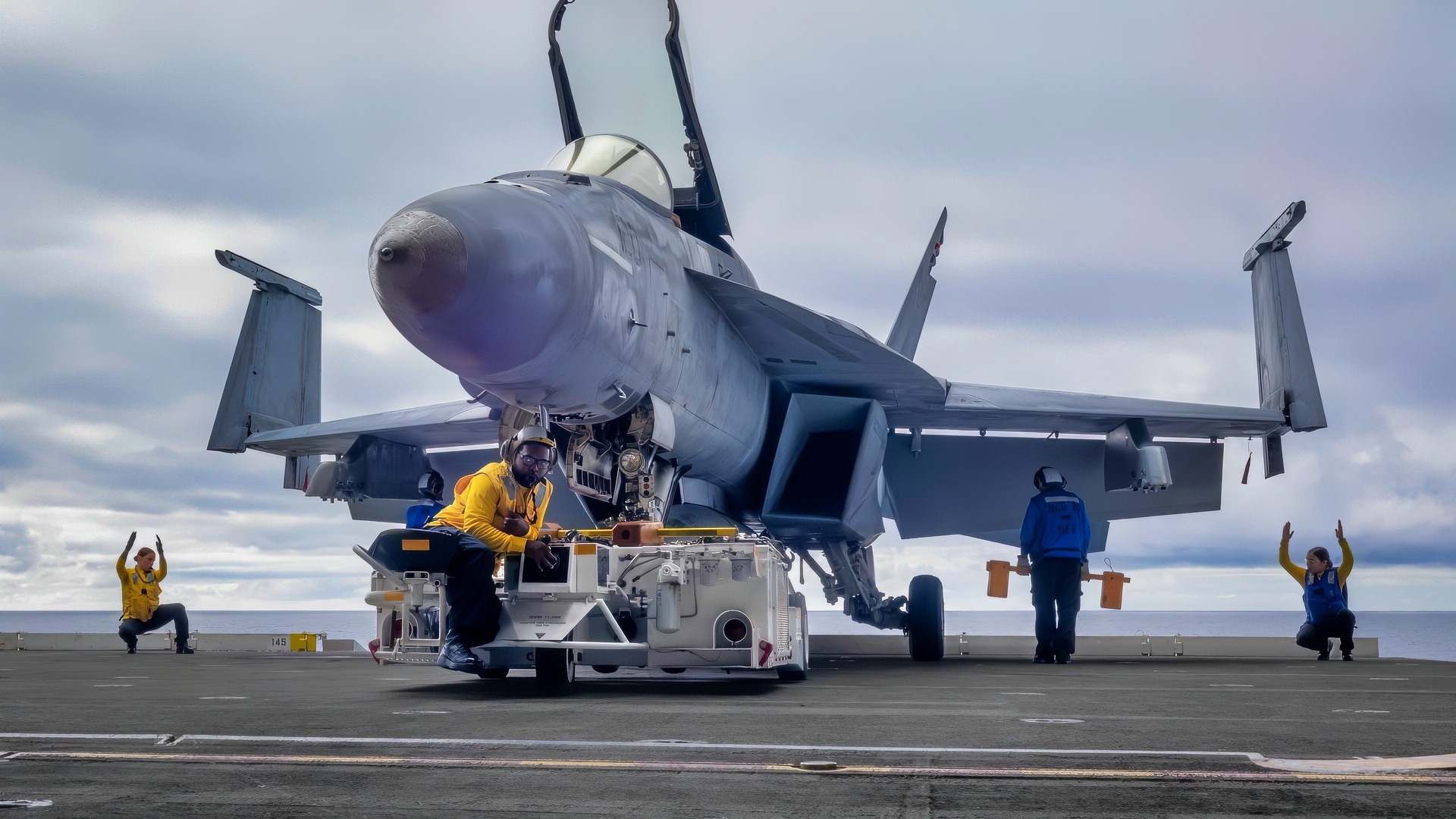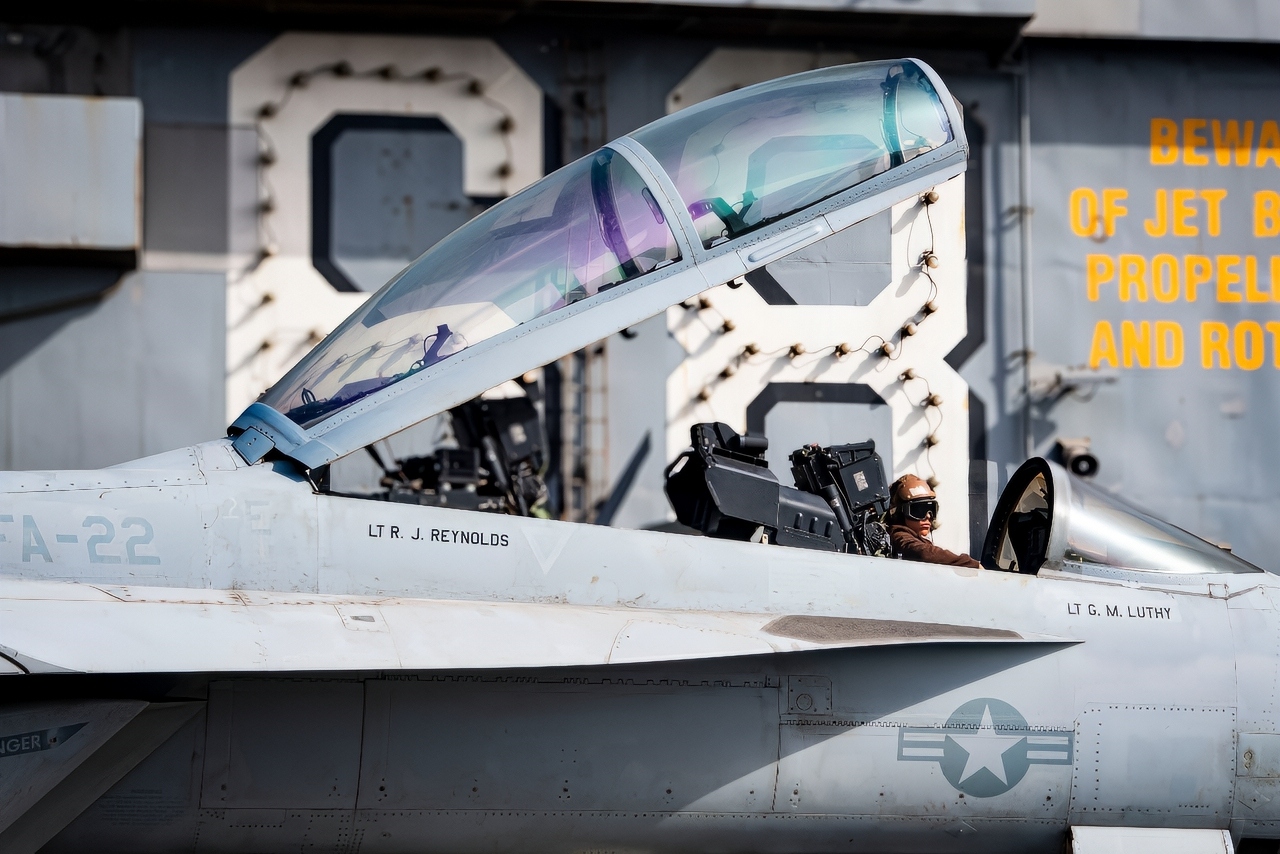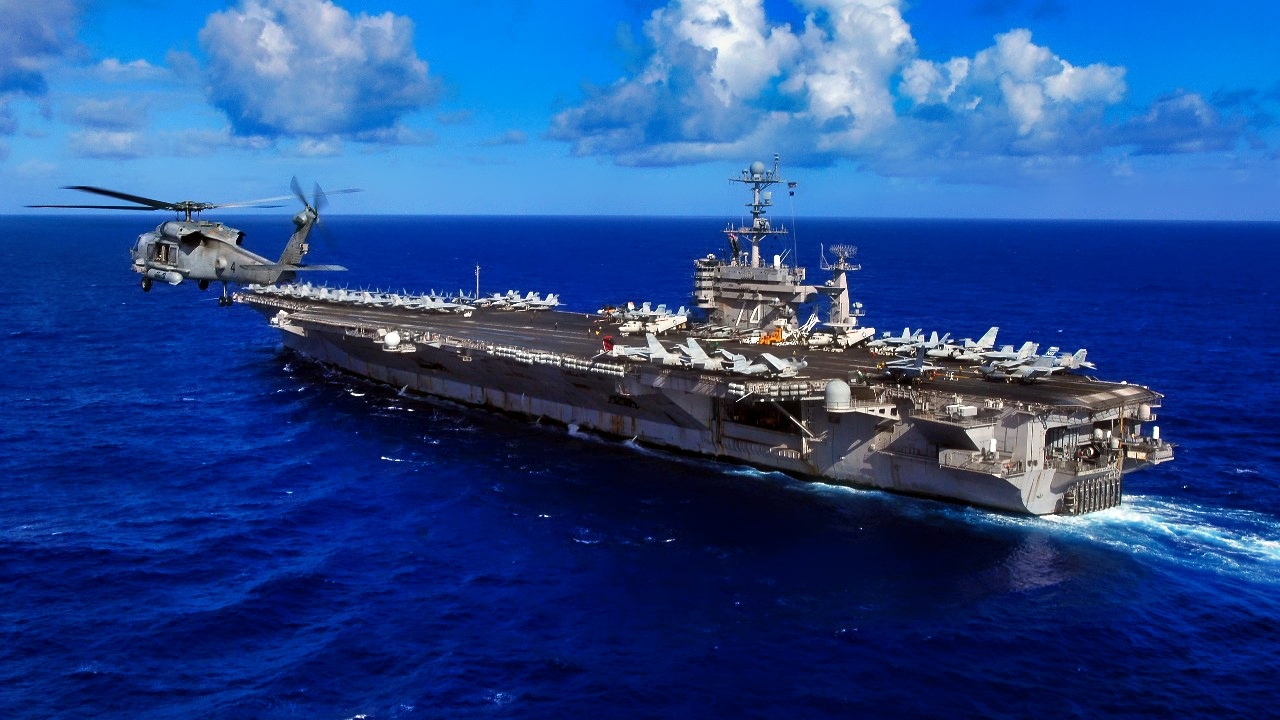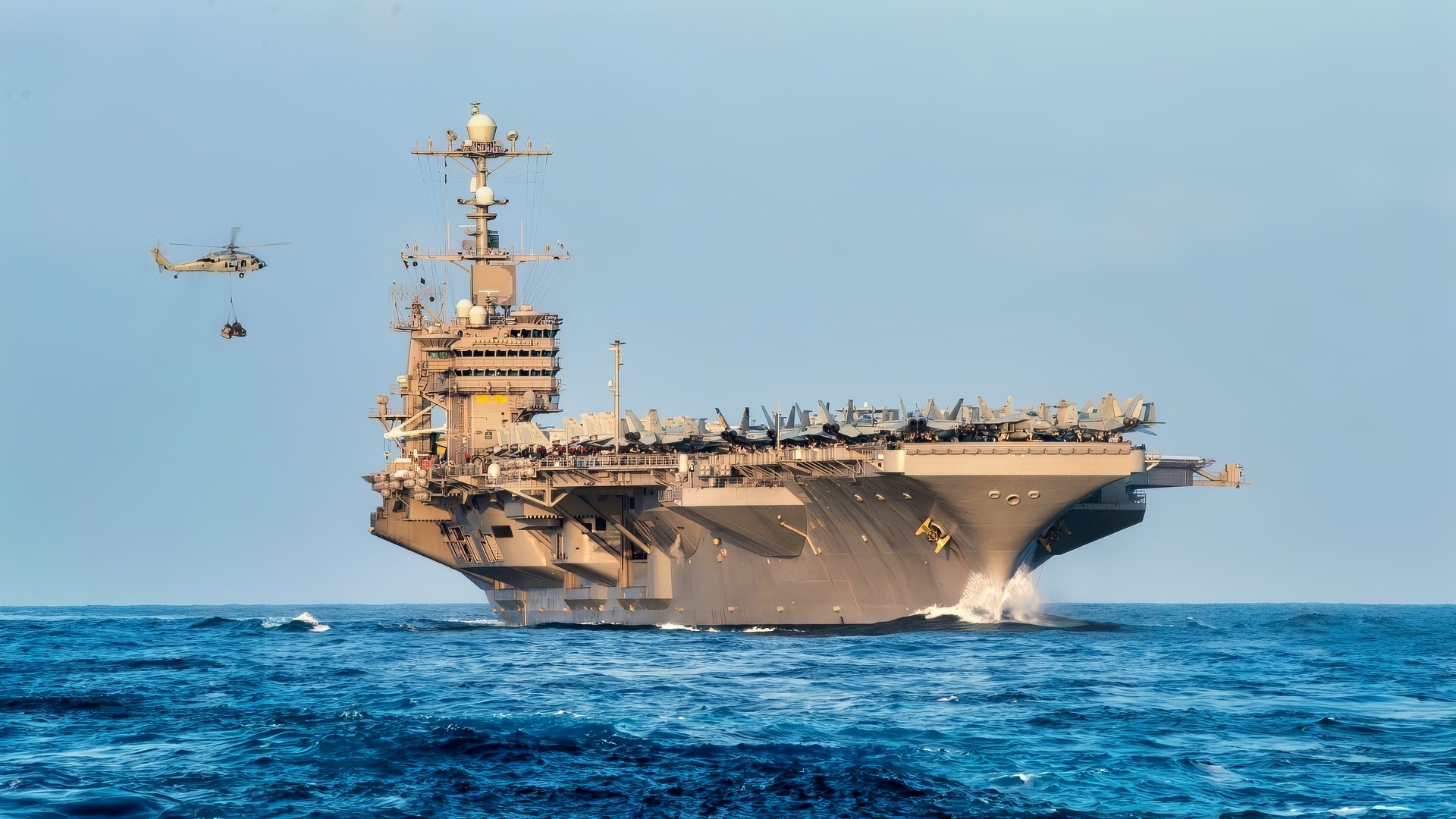Key Points and Summary – The Refueling and Complex Overhaul (RCOH) is a massive, multi-year mid-life refit for U.S. nuclear aircraft carriers, designed to extend their service life by another 25 years.
-The complex process, which can take up to six years, involves replacing the fuel in the ship’s nuclear reactors.

ATLANTIC OCEAN (Aug. 13, 2025) Sailors transport an F/A-18E Super Hornet attached to the “Gladiators” of Strike Fighter Squadron (VFA) 106 onto an aircraft elevator aboard the Nimitz-class aircraft carrier USS George H.W. Bush (CVN 77). George H.W. Bush is underway conducting carrier qualifications and routine operations in the Atlantic Ocean. (U.S. Navy photo by Mass Communication Specialist Seaman Apprentice Kayleigh Tucker)
-It also serves as a “wholesale modernization” opportunity, allowing crews to upgrade everything from weapons and radar to electronics and sensors while the ship is opened up.
-The sheer length of the RCOH is a primary reason the U.S. Navy maintains a large 11-carrier fleet to ensure global operational readiness.
Why Aircraft Carriers Need Such a Long Refit
The U.S. Navy’s Gerald R. Ford-class carriers are expected to serve into the 2100s, sustaining U.S. maritime power projection for several generations into the future.
Just like their Nimitz-class predecessors, the new aircraft carriers—the USS Gerald R. Ford (CVN-78) is the only one that is operational so far—will eventually need to go through a mid-life refueling effort to see them through that long life of service at sea.
A Six-Year Slumber
The refueling process can have quite an impact on operations.
Active carriers essentially are dry docked for years—taken out of the water for repairs. Refueling a nuclear-powered aircraft carrier is among the most complex industrial tasks; it involves lengthy, highly specialized procedures intended to ensure the carrier can surge several decades longer into the future.
The process is as difficult and challenging as it is important, and it can take up to six years.
The Refueling and Complex Overhaul (RCOH) process for carriers is intended as a mid-life service extension, but also a substantial upgrade.
It involves opening a huge hole in the ship to enable access to the reactor and other critical ship systems.

U.S. CENTRAL COMMAND AREA OF RESPONSIBILITY (July 22, 2025) An F/A-18F Super Hornet, attached to Strike Fighter Squadron (VFA) 22, taxis across the flight deck of the Nimitz-class aircraft carrier USS Nimitz (CVN 68) in the U.S. Central Command area of responsibility. (Official U.S. Navy photo)
The reactor must first be brought into a low-power state before being fully shut down and left to cool off for several days before procedures may begin.
Then, bolts are removed, and the reactor is cracked open and lifted off with a large crane.
Once the top of the reactor is off, new fuel assemblies can be added in place of old ones in large increments.
Several hundred rods can be removed at one time; all of them need to be replaced to fully refuel the boat.
This process takes quite a bit of time—it requires great care and impeccable precision.
Once it is complete, the large top of the reactor can be bolted back on after all the water is pumped out.
Maintenance and Modernization
The RCOH process, however, involves much more than refueling the reactor.

A Sailor directs an F/A-18E Super Hornet from the “Kestrels” of Strike Fighter Squadron (VFA) 137 on the flight deck of the aircraft carrier USS Nimitz (CVN 68) in the South China Sea, May 12, 2025. Nimitz is underway in the U.S. 7th Fleet area of operations on a scheduled deployment, demonstrating the U.S. Navy’s unwavering commitment to a free and open Indo-Pacific. (U.S. Navy Photo by Mass Communication Specialist Seaman Apprentice Franklyn M. Guage)
Many other systems on a carrier can only be upgraded while the reactor is offline.
Further, given that generally sealed-off areas are opened up and available for maintenance crews to reach, a great amount of additional work takes place.
With access to the ship’s critical systems, engineers can upgrade the ship’s electronics, command and control systems, digital sensors, radar, and computing. Essentially, a RCOH offers an opportunity for wholesale modernization of the carrier’s weapons systems, fire control apparatus and overall wiring.
Much of the hardware likely needs to be replaced due to wear and tear, yet there are also many opportunities to upgrade much of the software woven throughout the ship’s computer systems.
Opens up Ship Caverns
RCOH opens up vast, typically empty caverns in the body of the ship where key equipment such as generators, pipelines, water supplies, and other essential systems is housed.
There is likely extensive piping throughout the body of a carrier to carry water and cooling materials while also ensuring on-board generators sustain the power supply throughout the ship.
Assessing and repairing all of this takes time, and once upgraded, much of the ship needs to be reassembled. In some cases, parts of the hull and internal steel casings need to be cleaned off and reinforced.

An HH-60H Seahawk, from the “Eightballers” of Helicopter Anti-Submarine Squadron (HS) 8, flies past Nimitz-class aircraft carrier USS John C. Stennis (CVN 74) during flight operations. Stennis is on a scheduled deployment to promote peace, regional cooperation and stability.
The process can be lengthy and cumbersome, and while it is expected to finish in roughly four years, many RCOH efforts can take up to six years, which was the case with the USS George Washington (CVN-73).
Four Aircraft Carriers at Sea
The complexity and duration of the RCOH dry dock period is one reason the U.S. Navy maintains 11 carriers.
At any one time, four aircraft carriers are at sea patrolling, or deployed on deterrence or global stability missions; three or four more are docked and standing by, ready in case of an emergency or a fast-erupting conflict; and three carriers can be dry docked for repairs, refurbishment, or RCOH.
This arrangement keeps seven or eight ready carriers in position to support Navy operations around the world—it is a system that ensures massive power projection potential for the service.
There are many theaters of operation, and the regular availability of deployable carriers is especially relevant in the Pacific, a vast region that can accommodate as many as three Carrier Strike Groups at one time. One carrier is permanently based in Yokosuka, Japan, and five more are spread across the Western coastline of the United States, including in San Diego and in Bremerton, Washington.
About the Author: Kris Osborn
Kris Osborn is the President of Warrior Maven – Center for Military Modernization. Osborn previously served at the Pentagon as a highly qualified expert in the Office of the Assistant Secretary of the Army—Acquisition, Logistics & Technology. Osborn has also worked as an anchor and on-air military specialist at national TV networks. He has appeared as a guest military expert on Fox News, MSNBC, The Military Channel, and The History Channel. He also has a Masters Degree in Comparative Literature from Columbia University.
More Military
‘Captain, We Have Been Hit’: A Tiny Nuclear Submarine ‘Sank’ $4.5 Billion Navy Aircraft Carrier
America’s F-35 Stealth Fighter Simply Summed Up In Just 1 Word
China’s New J-35 Stealth Fighter Simply Summed Up In Just 1 Word
The U.S. Navy Is Now ‘Cannibalizing’ Its Own Fighter Jets and Submarines
Operation Black Buck: How Avro Vulcan Bombers Broke Range Records in the Falklands War










